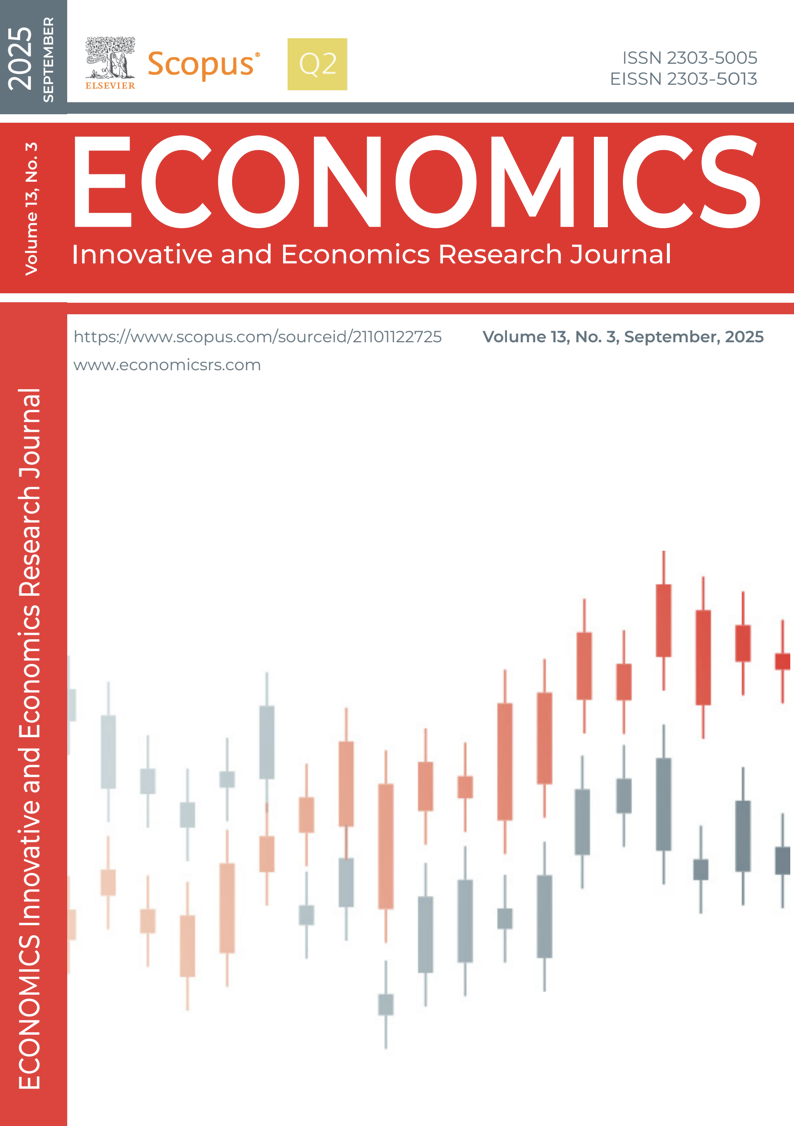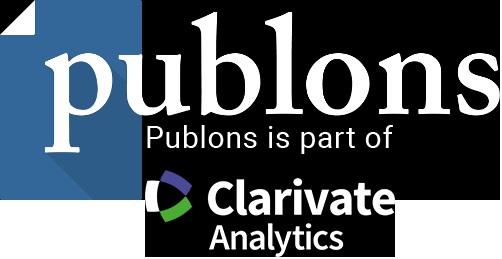ROLE OF DIGITAL TECHNOLOGIES BASED ON CYBERSECURITY AWARENESS IN ENHANCING FIRMS’ PERFORMANCE: DIGITAL ACCOUNTING SYSTEMS SETTING
DOI:
https://doi.org/10.2478/eoik-2025-0070Keywords:
Cybersecurity awareness, Digital accounting systems, Organization Performance, information security, Intention to use, SMEs.Abstract
Regarding the endeavors of this study, managing cybersecurity policies and producers within organizations suggests increasing the efficiency of digital accounting systems and, eventually, the overall performance among Small-Medium Enterprises (SMEs) in Jordan. Using a quantitative approach, 435 employees from SEMs were surveyed to determine the purpose of this study. Utilizing a structural equation model based on AMOS software, the results of this study indicate that employees’ cybersecurity awareness is significantly affected by their priors (Strategies Adopted, Legal Consequences, Proactive, and Information Security). Additionally, the results reveal that employees’ cybersecurity awareness significantly influences their adoption of digital accounting systems. Furthermore, the results reveal that the adoption of digital accounting systems significantly influences organizational performance. The results of this research contribute to the related literature through integrating Human-Organization-Technology Theory and Diffusion of Innovations Theory to reinforce performance. Finally, the primary practical insight is that policymakers in SEMs are encouraged to employ assertive policies and procedures regarding cybersecurity settings to obtain digital accounting quality and enhance overall business performance.
References
Abad-Segura, E., Infante-Moro, A., González-Zamar, M. D., & López-Meneses, E. (2024). Influen-
tial Factors For A Secure Perception Of Accounting Management With Blockchain Technol-
ogy. Journal of Open Innovation: Technology, Market, and Complexity, 100264. https://doi.
org/10.1016/j.joitmc.2024.100264
Abdelhalim, A. M. (2024). How management accounting practices integrate with big data analytics and
its impact on corporate sustainability. Journal of Financial Reporting and Accounting, 22(2),
-432. https://doi.org/10.1108/JFRA-01-2023-0053
Abu Huson, Y., Sierra-García, L., & Garcia-Benau, M. A. (2024). A bibliometric review of information
technology, artificial intelligence, and blockchain on auditing. Total Quality Management &
Business Excellence, 35(1-2), 91-113. https://doi.org/10.1080/14783363.2023.2256260
Adeyeri, T. B. (2024). Automating Accounting Processes: How AI is Streamlining Financial Reporting. Journal
of Artificial Intelligence Research, 4(1), 72-90. https://thesciencebrigade.com/JAIR/article/view/166
Ahmad, A. Y. B. (2024). Firm Determinants that Influences Implementation of Accounting Technologies
in Business Organizations. WSEAS Transactions on Business and Economics, 21, 1-11. https://
doi.org/10.37394/23207.2024.21.1
Ahmad, A., El-Dalahmeh, S., Al-Shakri, K., Alkhawaldeh, B., & Alsmadi, L. (2024). The link between
management accounting information systems and firm competitiveness: The mediating role of
innovation capabilities. Uncertain Supply Chain Management, 12(3), 1781-1790. https://doi.
org/10.5267/j.uscm.2024.3.004
Akter, M., Kummer, T. F., & Yigitbasioglu, O. (2024). Looking beyond the hype: The challenges of
blockchain adoption in accounting. International Journal of Accounting Information Sys-
tems, 53, 100681. https://doi.org/10.1016/j.accinf.2024.100681
Akter, S., Uddin, M. R., Sajib, S., Lee, W. J. T., Michael, K., & Hossain, M. A. (2022). Reconceptualiz-
ing cybersecurity awareness capability in the data-driven digital economy. Annals of operations
research, 1-26. https://doi.org/10.1007/s10479-022-04844-8
Albrecht, J. P. (2016). How the GDPR will change the world. European Data Protection Law Review, 2,
https://doi.org/10.21552/EDPL/2016/3/4
Alghizzawi, M., Ezmigna, I., Ezmigna, A. A. R., Alhawamdeh, Z. M., Hammouri, M. A., Alawneh, E.,
& Al-Gasawneh, J. A. (2024). The Big Data Analysis and Digital Marketing. In Opportunities
and Risks in AI for Business Development: Volume 2, 1-10. Cham: Springer Nature Switzerland.
https://doi.org/10.1007/978-3-031-65207-3_1
Alhanatleh, H., Alghizzawi, M., Habes, M., Tahat, K., & Tahat, D. N. (2023, November). The Impact
of Digital Marketing Through the TikTok Application on Purchase Intent. In 2023 Tenth Inter-
national Conference on Social Networks Analysis, Management and Security (SNAMS), 1-6.
IEEE. https://doi.org/10.1109/SNAMS60348.2023.10375451
Alhanatleh, H., Khaddam, A., & Abousweilem, F. (2022). Mobile government public value model for
assessing the public institution’s services: evidence through the context of Jordan. International
Journal of Data and Network Science, 6(4), 1295-1308. https://doi.org/10.5267/j.ijdns.2022.6.005
Alhanatleh, H., Khaddam, A., Abudabaseh, F., Alghizzawi, M., & Alzghoul, A. (2024). Enhancing the
public value of mobile fintech services through cybersecurity awareness antecedents: A nov-
el framework in Jordan. Investment Management and Financial Innovations, 21(1), 417-430.
https://doi.org/10.21511/imfi.21(1).2024.32
Alharasis, E. E., & Alkhwaldi, A. F. (2024, June). The Implementation of Advanced AIS and the Accounting
Data Quality: The Case of Jordanian SMEs. In International Conference on Human-Computer Inter-
action, 149-173. Cham: Springer Nature Switzerland. https://doi.org/10.1007/978-3-031-61318-0_11
Al-Hattami, H. M., & Kabra, J. D. (2024). The influence of accounting information system on man-
agement control effectiveness: The perspective of SMEs in Yemen. Information Develop-
ment, 40(1), 75-93. https://doi.org/10.1177/02666669221087184
Zureigat B. N. et al. / Economics - Innovative and Economics Research Journal, doi: 10.2478/eoik-2025-0070
Al-Hattami, H. M., Senan, N. A. M., Al-Hakimi, M. A., & Azharuddin, S. (2024). An empirical examination
of AIS success at the organizational level in the era of COVID-19 pandemic. Global Knowledge,
Memory and Communication, 73(3), 312-330. https://doi.org/10.1108/GKMC-04-2022-0094
Almaqtari, F. A. (2024). The Role of IT Governance in the Integration of AI in Accounting and Auditing
Operations. Economies, 12(8), 199. https://doi.org/10.3390/economies12080199
Almaqtari, F. A., Farhan, N. H., Al-Hattami, H. M., Elsheikh, T., & Al-dalaien, B. O. A. (2024). The
impact of artificial intelligence on information audit usage: Evidence from developing coun-
tries. Journal of Open Innovation: Technology, Market, and Complexity, 10(2), 100298. https://
doi.org/10.1016/j.joitmc.2024.100298
Al-Okaily, M. (2024). Assessing the effectiveness of accounting information systems in the era
of COVID-19 pandemic. VINE Journal of Information and Knowledge Management Sys-
tems, 54(1), 157-175. https://doi.org/10.1108/VJIKMS-08-2021-0148
Alrfai, M. M., Alqudah, H., Lutfi, A., Al-Kofahi, M., Alrawad, M., & Almaiah, M. A. (2023). The influ-
ence of artificial intelligence on the AISs efficiency: Moderating effect of the cyber security. Co-
gent Social Sciences, 9(2), 2243719. https://doi.org/10.1080/23311886.2023.2243719
Alshirah, M., Lutfi, A., Alshirah, A., Saad, M., Ibrahim, N. M. E. S., & Mohammed, F. (2021). Influences
of the environmental factors on the intention to adopt cloud based accounting information system
among SMEs in Jordan. Accounting, 7(3), 645-654. https://doi.org/10.5267/j.ac.2020.12.013
Alzghoul, A., Alhanatleh, H., Alnajdawi, S., Alghizzawi, M., & mohammad Al Htibat, A. (2024, De-
cember). Actual Role of Cybersecurity Awareness and Knowledge to Drive Digital Technology
Adoption for Enhance Sustainable Development: Engineering Industry Setting. In 2024 Inter-
national Conference on Decision Aid Sciences and Applications (DASA), 1-5. IEEE. https://doi.
org/10.1109/DASA63652.2024.10836494
Anyanwu, A., Olorunsogo, T., Abrahams, T. O., Akindote, O. J., & Reis, O. (2024). Data confidentiality and
integrity: a review of accounting and cybersecurity controls in superannuation organizations. Com-
puter Science & IT Research Journal, 5(1), 237-253. https://doi.org/10.51594/csitrj.v5i1.735
Appiah, G., Amankwah-Amoah, J., & Liu, Y. L. (2020). Organizational architecture, resilience, and
cyberattacks. IEEE Transactions on Engineering Management, 69(5), 2218-2233. https://doi.
org/10.1109/TEM.2020.3004610
AlFraihat, S. F. A., Ali, A. M., Hodaifa, G., & Alghizzawi, M. (2025). The Impact of Digital Content
Marketing on Brand Defence: The Mediating Role of Behavioural Engagement and Brand At-
tachment. Administrative Sciences, 15(4), 124. https://doi.org/10.3390/admsci15040124
Awang, P. (2018). Pendekatan Mudah SEM (Structural Equation Modeling). MPWS Rich Resources.
http://eprints.unisza.edu.my/id/eprint/3865
Azaan, S., & Elsa, J. (2024). The Rise of Automated Accounting: Navigating the Digital Landscape, No.
EasyChair. https://easychair.org/publications/preprint/G7b5
Ballantine, J., & Galliers, R. D. (2017). New developments in information technology: A call for action.
In The Routledge Companion to Accounting Information Systems. 292-301. Routledge. https://
doi.org/10.4324/9781315647210
Berkman, H., Jona, J., Lee, G., & Soderstrom, N. (2018). Cybersecurity awareness and market valuations. Jour-
nal of Accounting and Public Policy, 37(6), 508-526. https://doi.org/10.1016/j.jaccpubpol.2018.10.003
Bosanac, K., Ivančić, I., & Dragičević, D. (2025). Contemporary needs of animation programmes in
business tourism. Oeconomica Jadertina, 15(1), 55–68. https://doi.org/10.15291/oec.4562
Brown, T. A. (2015). Confirmatory factor analysis for applied research. Guilford publications. https://
www.guilford.com/books/Confirmatory-Factor-Analysis-for-Applied-Research/Timo-
thy-Brown/9781462515363
Bulgurcu, B., Cavusoglu, H., & Benbasat, I. (2010). Information security policy compliance: an empir-
ical study of rationality-based beliefs and information security awareness. MIS quarterly, 523-
https://www.jstor.org/stable/25750690
Role of Digital Technologies Based on Cybersecurity Awareness in Enhancing Firms’ Performance: Digital
Accounting Systems Setting
Cram, W. A., Wang, T., & Yuan, J. (2023). Cybersecurity research in accounting information systems: A
review and framework. Journal of Emerging Technologies in Accounting, 20(1), 15-38. https://
doi.org/10.2308/JETA-2020-081
Curtis, S. R., Carre, J. R., & Jones, D. N. (2018). Consumer security behaviors and trust following a data
breach. Managerial Auditing Journal, 33(4), 425-435. https://doi.org/10.1108/MAJ-11-2017-1692
Dijkstra, T. K., & Henseler, J. (2015). Consistent partial least squares path modeling. MIS Quarterly,
(2), 297–316. https://www.jstor.org/stable/26628355
Dora, M., Kumar, M., Van Goubergen, D., Molnar, A., & Gellynck, X. (2013). Operational performance
and critical success factors of lean manufacturing in European food processing SMEs. Trends in
food science & technology, 31(2), 156-164. https://doi.org/10.1016/j.tifs.2013.03.002
Ekelund, S., & Iskoujina, Z. (2019). Cybersecurity economics–balancing operational security spending. In-
formation Technology & People, 32(5), 1318-1342. https://doi.org/10.1108/ITP-05-2018-0252
Elmaasrawy, H. E., & Tawfik, O. I. (2024). The impact of using the Internet of Things on the develop-
ment of the accounting information system in the health sector. In Artificial Intelligence, Big
Data, Blockchain and 5G for the Digital Transformation of the Healthcare Industry, 253-270.
Academic Press. https://doi.org/10.1016/B978-0-443-21598-8.00006-3
Hamza, R. A. E. M., Ahmed, N. H., Mohamed, A. M. E., Bennaceur, M. Y., Elhefni, A. H. M., &
Elshaabany, M. M. (2024). The Impact of Artificial Intelligence (AI) on the Accounting System
of Saudi Companies. WSEAS Transactions on Business and Economics, 21(January), 499-511.
https://doi.org/10.37394/23207.2024.21.42
Hasan, S., Ali, M., Kurnia, S., & Thurasamy, R. (2021). Evaluating the cyber security readiness of
organizations and its influence on performance. Journal of Information Security and Applica-
tions, 58, 102726. https://doi.org/10.1016/j.jisa.2020.102726
Hasani, T., O’Reilly, N., Dehghantanha, A., Rezania, D., & Levallet, N. (2023). Evaluating the adop-
tion of cybersecurity and its influence on organizational performance. SN Business & Econom-
ics, 3(5), 97. https://doi.org/10.1007/s43546-023-00477-6
Hermida, R. (2015). The problem of allowing correlated errors in structural equation modeling: con-
cerns and considerations. Computational Methods in Social Sciences, 3(1), 5-17. https://www.
ceeol.com/search/article-detail?id=417198
Hossain, M. Z., & Johora, F. T. (2024). Cybersecurity in Accounting: Protecting Financial Data in the
Digital Age. Available at SSRN 4868132. https://doi.org/10.59324/ejaset.2024.2(6).06
Idris, M. I., Siam, Y. I. A., & Ahmad, A. L. (2018). The impact of external auditor size on the relationship
between audit committee effectiveness and earnings management. Investment Management and
Financial Innovations, 15(3), 122-130. http://dx.doi.org/10.21511/imfi.15(3).2018.10
Jackson, D., & Allen, C. (2024). Enablers, barriers and strategies for adopting new technology in ac-
counting. International Journal of Accounting Information Systems, 52, 100666. https://doi.
org/10.1016/j.accinf.2023.100666
JCI, 2023. https://www.aci.org.jo/Publication_Details.aspx?id=4104 . Accessed by the Internet in (17
March, 2021).
Jiang, L. (2024). The use of blockchain technology in enterprise financial accounting information shar-
ing. Plos one, 19(2), e0298210. https://doi.org/10.1371/journal.pone.0298210
Kakizhanova, T., Utepkaliyeva, K., Zeinolla, S., Aben, A., & Ilyashova, G. (2025). Impact of Digita-
lization, Economic Growth and Birth Rate on Female Labor Force: Evidence from Kazakh-
stan. ECONOMICS - Innovative and Economics Research Journal, 13(2), 95–110. https://doi.
org/10.2478/eoik-2025-0032
Khando, K., Gao, S., Islam, S. M., & Salman, A. (2021). Enhancing employees information security
awareness in private and public organisations: A systematic literature review. Computers &
security, 106, 102267. https://doi.org/10.1016/j.cose.2021.102267
Zureigat B. N. et al. / Economics - Innovative and Economics Research Journal, doi: 10.2478/eoik-2025-0070
Knowles, W., Prince, D., Hutchison, D., Disso, J. F. P., & Jones, K. (2015). A survey of cyber security
management in industrial control systems. International journal of critical infrastructure pro-
tection, 9, 52-80. https://doi.org/10.1016/j.ijcip.2015.02.002
Kumar, S., Biswas, B., Bhatia, M. S., & Dora, M. (2021). Antecedents for enhanced level of cyber-secu-
rity in organisations. Journal of Enterprise Information Management, 34(6), 1597-1629. https://
doi.org/10.1108/JEIM-06-2020-0240
Kusumawardhani, F., Ratmono, D., Wibowo, S., Darsono, D., Widyatmoko, S., & Rokhman, N. (2024).
The impact of digitalization in accounting systems on information quality, cost reduction and de-
cision making: Evidence from SMEs. International Journal of Data and Network Science, 8(2),
-1116. https://doi.org/10.5267/j.ijdns.2023.11.023
Masa’deh, R. E., Almajali, D. A., & Alsmadi, L. A. (2025). Acceptance of Artificial Intelligence in a
Jordanian Firm: An Overview. The Role of Artificial Intelligence Applications in Business, 1-10.
https://doi.org/10.1108/978-1-83662-518-620251001
Magboul, I., Jebreel, M., Shawtri, F., Qabajeh, M., Shanti, A., Alqudah, M., & Abu Huson, Y. (2024). Factors
influencing accounting information system usage by oil companies & performance outcomes. Co-
gent Business & Management, 11(1), 2369211. https://doi.org/10.1080/23311975.2024.2369211
Masa’deh, R. E., Warrad, L. H., Jahmani, K., Almajali, D., Majali, S. A., & Al-Radaideh, A. T. (2024).
Antecedents of adoption blockchain: Empirical study in Jordanian firms. International Journal of
Data and Network Science, 8 (2024) 2601–2614. https://doi.org/doi: 10.5267/j.ijdns.2024.4.017
Mirtsch, M., Kinne, J., & Blind, K. (2020). Exploring the adoption of the international information secu-
rity management system standard ISO/IEC 27001: a web mining-based analysis. IEEE Transac-
tions on Engineering Management, 68(1), 87-100. https://doi.org/10.1109/TEM.2020.2977815
Moudud-Ul-Huq, S., Asaduzzaman, M., & Biswas, T. (2020). Role of cloud computing in global accounting
information systems. The Bottom Line, 33(3), 231-250. https://doi.org/10.1108/BL-01-2020-0010
Moulton, R., & Coles, R. S. (2003). Applying information security governance. Computers & Securi-
ty, 22(7), 580-584. https://doi.org/10.1016/S0167-4048(03)00705-3
Nassani, A. A., Yousaf, Z., Grigorescu, A., Oprisan, O., & Haffar, M. (2023). Accounting informa-
tion systems as mediator for digital technology and strategic performance interplay. Electron-
ics, 12(8), 1866. https://doi.org/10.3390/electronics12081866
Nassimbeni, G., Sartor, M., & Dus, D. (2012). Security risks in service offshoring and outsourcing. Indus-
trial Management & Data Systems, 112(3), 405-440. https://doi.org/10.1108/02635571211210059
Neri, M., Niccolini, F., & Martino, L. (2024). Organizational cybersecurity readiness in the ICT sector:
a quanti-qualitative assessment. Information & Computer Security, 32(1), 38-52. https://doi.
org/10.1108/ICS-05-2023-0084
Oroni, C. Z., & Xianping, F. (2023). Structural evaluation of management capability and the mediation
role of cybersecurity awareness towards enterprise performance. Journal of Data, Information
and Management, 5(4), 345-361. https://doi.org/10.1007/s42488-023-00108-7
Pereira, C., Castro, B., Gomes, L., & Canha, H. (2024). Firms’ Investment Level and (In) Efficiency:
The Role of Accounting Information System Quality. International Journal of Financial Stud-
ies, 12(1), 9. https://doi.org/10.3390/ijfs12010009
Pflueger, D., Kornberger, M., & Mouritsen, J. (2024). What is blockchain accounting? A critical exam-
ination in relation to organizing, governance, and trust. European Accounting Review, 33(4),
-1164. https://doi.org/10.1080/09638180.2022.2147973
Pigola, A., Da Costa, P. R., Ferasso, M., & da Silva, L. F. C. (2024). Enhancing cybersecurity capabil-
ity investments: Evidence from an experiment. Technology in Society, 76, 102449. https://doi.
org/10.1016/j.techsoc.2023.102449
Priambodo, A., Anwar, N., & Suharno, S. (2025). Does Digital Literacy Mediate the Relationship be-
tween ICT and Regional Own-Source Revenue? ECONOMICS - Innovative and Economics
Research Journal, 13(2), 203–222. https://doi.org/10.2478/eoik-2025-0037
Role of Digital Technologies Based on Cybersecurity Awareness in Enhancing Firms’ Performance: Digital
Accounting Systems Setting
Rabie, H. (2024). The Mediating Role of Cybersecurity on the Relationship between Internal Con-
trol and the Implementation of Cloud-Based Enterprise Resource Planning Systems in Jor-
danian Commercial Banks. Kurdish Studies, 12(2), 2921-2936. https://pdfs.semanticscholar.
org/2968/7110671b863d86b9b6a155537bb702e06ad4.pdf
Podsakoff, P. M., MacKenzie, S. B., Lee, J. Y., & Podsakoff, N. P. (2003). Common method biases in
behavioral research: a critical review of the literature and recommended remedies. Journal of
applied psychology, 88(5), 879. https://doi.org/10.1037/0021-9010.88.5.879
Ratten, V. (2019). The effect of cybercrime on open innovation policies in technology firms. Information
Technology & People, 32(5), 1301-1317. https://doi.org/10.1108/ITP-03-2018-0119
Rawat, D. B., Doku, R., & Garuba, M. (2019). Cybersecurity in big data era: From securing big data to
data-driven security. IEEE Transactions on Services Computing, 14(6), 2055-2072. https://doi.
org/10.1109/TSC.2019.2907247
Raza, I., & Awang, Z. (2021). Knowledge-sharing practices in higher educational institutes of Islam-
abad, Pakistan: an empirical study based on theory of planned behavior. Journal of Applied
Research in Higher Education, 13(2), 466–484. https://doi.org/10.1108/JARHE-03-2020-0068
Rex B. Kline. (2011). Principles and Practice of Structural Equation Modeling. In The Guilford Press
(3nd ed.). The Guilford Press. http://ndl.ethernet.edu.et/bitstream/123456789/74702/1/35.pdf
Ringle, C. M., Sarstedt, M., Mitchell, R., & Gudergan, S. P. (2020). Partial least squares structural
equation modeling in HRM research. The international journal of human resource manage-
ment, 31(12), 1617-1643. https://doi.org/10.1080/09585192.2017.1416655
Rogers, R. W. (1975). A protection motivation theory of fear appeals and attitude change1. The Journal
of Psychology, 91(1), 93-114. https://doi.org/10.1080/00223980.1975.9915803
Roumani, Y., Nwankpa, J. K., & Roumani, Y. F. (2015). Time series modeling of vulnerabilities. Com-
puters & Security, 51, 32-40. https://doi.org/10.1016/j.cose.2015.03.003
Salehi, A. K. (2024). Critical review of the role of accounting in the decision-making process. Journal of Islam-
ic Accounting and Business Research, 15(2), 244-264. https://doi.org/10.1108/JIABR-12-2021-0310
Samtani, S., Chinn, R., Chen, H., & Nunamaker Jr, J. F. (2017). Exploring emerging hacker assets and
key hackers for proactive cyber threat intelligence. Journal of Management Information Sys-
tems, 34(4), 1023-1053. https://doi.org/10.1080/07421222.2017.1394049
Saputra, K. A. K., & Paranoan, S. (2024). Do Cyber security, Digitalisation and Data Visualisation
Affect the Quality of Internal Environmental Audits?. Australasian Accounting, Business and
Finance Journal, 18(2), 158-174. https://doi.org/10.14453/aabfj.v18i2.10
Sarstedt, M., Ringle, C. M., & Hair, J. F. (2021). Partial least squares structural equation modeling.
In Handbook of market research, 587-632. Cham: Springer International Publishing. https://
doi.org/10.1007/978-3-319-57413-4_15
Shakdwipee, P., Agarwal, K., Kunwar, H., & Singh, S. (2023, August). Artificial Intelligence in Fi-
nance and Accounting: Opportunities and Challenges. In International Conference on ICT
for Sustainable Development, 165-177. Singapore: Springer Nature Singapore. https://doi.
org/10.1007/978-981-99-5652-4_17
Sipior, J. C., Bierstaker, J., Borchardt, P., & Ward, B. T. (2018). A ransomware case for use in the
classroom. Communications of the Association for Information Systems, 43(1), 32. https://doi.
org/10.17705/1CAIS.04332
Skopik, F., Settanni, G., & Fiedler, R. (2016). A problem shared is a problem halved: A survey on the
dimensions of collective cyber defense through security information sharing. Computers & Se-
curity, 60, 154-176. https://doi.org/10.1016/j.cose.2016.04.003
Soomro, R. B., Memon, S. G., Dahri, N. A., Al-Rahmi, W. M., Aldriwish, K., A. Salameh, A., ... & Sal-
eem, A. (2024). The Adoption of Digital Technologies by Small and Medium-Sized Enterprises
for Sustainability and Value Creation in Pakistan: The Application of a Two-Staged Hybrid
SEM-ANN Approach. Sustainability, 16(17), 7351. https://doi.org/10.3390/su16177351
Zureigat B. N. et al. / Economics - Innovative and Economics Research Journal, doi: 10.2478/eoik-2025-0070
Stefanska, B., & Al-Dawod, F. L. (2021). The importance of risk awareness in cybersecurity among
companies : A perspective on the role of top management (Dissertation). https://urn.kb.se/re-
solve?urn=urn:nbn:se:liu:diva-177218
Sun, Y., Li, J., Lu, M., & Guo, Z. (2024). Study of the Impact of the Big Data Era on Accounting and
Auditing. arXiv preprint arXiv:2403.07180. https://doi.org/10.48550/arXiv.2403.07180
Talwar, S., Dhir, A., Kaur, P., Zafar, N., & Alrasheedy, M. (2019). Why do people share fake news?
Associations between the dark side of social media use and fake news sharing behavior. Journal
of retailing and consumer services, 51, 72-82. https://doi.org/10.1016/j.jretconser.2019.05.026
Tan, K. S., Chong, S. C., Lin, B., & Eze, U. C. (2009). Internet-based ICT adoption: Evidence from
Malaysian SMEs. Industrial Management and Data Systems, 109(2), 224–244. https://doi.
org/10.1108/02635570910930118
Tao, H., Bhuiyan, M. Z. A., Rahman, M. A., Wang, G., Wang, T., Ahmed, M. M., & Li, J. (2019). Eco-
nomic perspective analysis of protecting ample data security and privacy. Future Generation
Computer Systems, 98, 660-671. https://doi.org/10.1016/j.future.2019.03.042
Thamae, R., Abdullah, H., & Mujinga, M. (2024, April). Enhancing Cybersecurity Policy Awareness
Programs in the Financial Sector: A Comprehensive Framework and Assessment of Effective-
ness. In International Conference on Business and Technology, 48-57. Cham: Springer Nature
Switzerland. https://doi.org/10.1007/978-3-031-67444-0_5
Thottoli, M. M. (2024). Leveraging information communication technology (ICT) and artificial in-
telligence (AI) to enhance auditing practices. Accounting Research Journal, 37(2), 134-150.
https://doi.org/10.1108/ARJ-09-2023-0269
Van der Haar, H., & Von Solms, R. (2003). A model for deriving information security control attribute
profiles. Computers & Security, 22(3), 233-244. https://doi.org/10.1016/S0167-4048(03)00311-0
Vărzaru, A. A., Bocean, C. G., Mangra, M. G., & Simion, D. (2022). Assessing users’ behavior on the
adoption of digital technologies in management and accounting information systems. Electron-
ics, 11(21), 3613. https://doi.org/10.3390/electronics11213613
Vestad, A., & Yang, B. (2023, July). Adoption of Cybersecurity Innovations—A Systematic Literature Re-
view. In The International Conference on Cybersecurity, Situational Awareness and Social Media,
-304. Singapore: Springer Nature Singapore. https://doi.org/10.1007/978-981-99-6974-6_16
Xue, B., Xu, F., & Warkentin, M. (2018). Critical role of ethical leadership on information security
climate and employee ISP violation behavior. WISP 2018 Proceedings. 16. https://aisel.aisnet.
org/wisp2018/16
Yigit Ozkan, B., & Spruit, M. (2023). Adaptable security maturity assessment and standardization for
digital SMEs. Journal of Computer Information Systems, 63(4), 965-987. https://doi.org/10.10
/08874417.2022.2119442
Yusof, M. M., Kuljis, J., Papazafeiropoulou, A., & Stergioulas, L. K. (2008). An evaluation framework for
Health Information Systems: human, organization and technology-fit factors (HOT-fit). Internation-
al journal of medical informatics, 77(6), 386-398. https://doi.org/10.1016/j.ijmedinf.2007.08.011
Zhang, C., Li, Z., Xu, J., & Luo, Y. (2024). Accounting information quality, firm ownership and technol-
ogy innovation: Evidence from China. International Review of Financial Analysis, 93, 103118.
Downloads
Published
How to Cite
Issue
Section
License
Copyright (c) 2025 ECONOMICS - INNOVATIVE AND ECONOMICS RESEARCH JOURNAL

This work is licensed under a Creative Commons Attribution-NonCommercial-NoDerivatives 4.0 International License.























